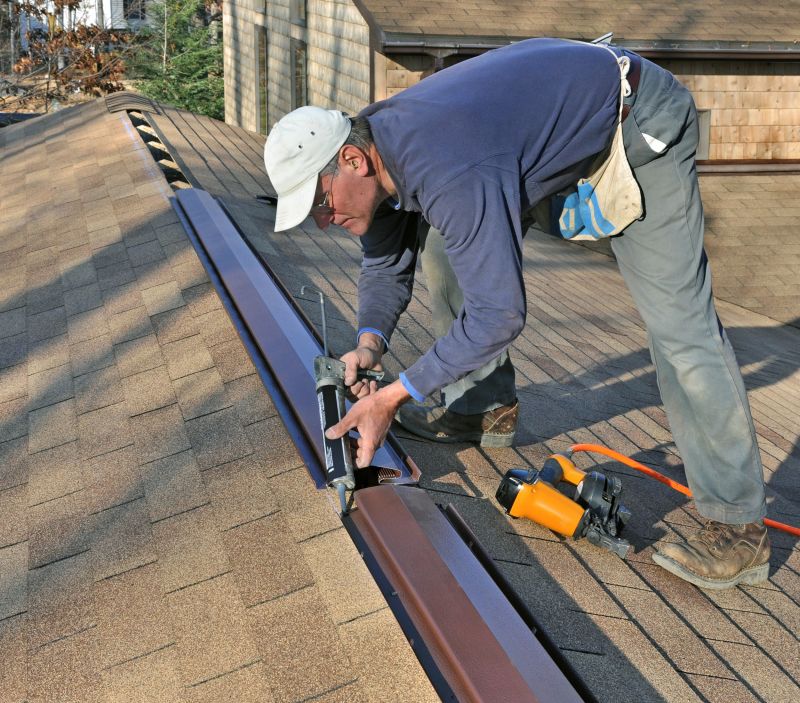Top-Rated Products For Effective Roof Ventilation And Vent Installations
Browse highly rated options that improve attic air circulation, reduce energy costs, and enhance roof durability.
 Proper roof ventilation is essential for maintaining a balanced and healthy attic environment, which can contribute to the overall durability of a building. Ventilation products help regulate temperature and moisture levels, preventing issues such as mold growth, wood rot, and ice dam formation during colder months. When selecting ventilation solutions, it is important to consider the specific needs of the roof structure, climate conditions, and the existing attic setup. Various types of vents and installation options are available to suit different roof types and architectural styles, offering flexibility for both new construction and retrofit projects.
Proper roof ventilation is essential for maintaining a balanced and healthy attic environment, which can contribute to the overall durability of a building. Ventilation products help regulate temperature and moisture levels, preventing issues such as mold growth, wood rot, and ice dam formation during colder months. When selecting ventilation solutions, it is important to consider the specific needs of the roof structure, climate conditions, and the existing attic setup. Various types of vents and installation options are available to suit different roof types and architectural styles, offering flexibility for both new construction and retrofit projects.
Top Overall Option
Universal Roof Ventilation System
A versatile and comprehensive ventilation solution that combines intake and exhaust features, designed to fit a wide range of roof types and sizes. It offers durable construction, easy installation, and effective airflow management, making it suitable for various residential and commercial projects.
Types of Products For Roof Ventilation And Vent Installations
Ridge Vents
Long, continuous vents installed along the roof ridge to allow warm, moist air to escape from the attic.
Soffit Vents
Vents installed under the eaves to facilitate intake airflow from outside, working in tandem with exhaust vents.
Gable Vents
Vents placed on the gable ends of a building to promote cross ventilation within the attic space.
Roof Louvers
Adjustable or fixed louvers that allow air to flow out while providing weather protection.
Powered Attic Fans
Electric or solar-powered fans that actively draw air out of the attic for enhanced ventilation.
Solar Roof Vents
Vents equipped with solar panels to operate fans without electrical wiring, suitable for remote locations.
Static Vents
Non-mechanical vents that rely on natural convection and wind to facilitate airflow.
Turbo Vents
Cylindrical vents that spin with wind to create a vacuum effect, drawing air out of the attic.
Attic Vent Baffles
Insulation supports that help maintain unobstructed airflow from soffit vents to the attic space.
Venting Curb Mounts
Vents designed to be installed on flat or low-slope roofs, providing effective exhaust solutions.
Popular Choices
A common choice for continuous ridge ventilation, allowing consistent airflow along the roof peak.
Widely used for intake ventilation, helping to draw fresh air into the attic space.
Popular for energy-efficient attic exhaust, utilizing solar power for operation.
Effective for cross ventilation, often chosen for its ease of installation and aesthetic appeal.
A widely used powered vent that spins with the wind to facilitate airflow without electrical wiring.
A simple, maintenance-free option that relies on natural airflow for ventilation.
Electric or solar-powered fans that actively remove hot air from the attic space.
Ideal for flat roofs or low-slope installations, providing effective exhaust options.
Adjustable vents that allow for customizable airflow and weather protection.
Designs that combine soffit venting with insulation support for integrated airflow management.
Ventilation products come in a range of designs, including passive vents that rely on natural airflow and powered vents that use electric or solar energy to actively move air. Proper installation and correct sizing are crucial to ensure effective airflow without compromising the roof’s integrity. Additionally, combining different types of vents can optimize airflow, helping to maintain a consistent attic temperature and moisture level. It is advisable to evaluate the overall ventilation strategy, considering factors such as air intake and exhaust balance, to achieve optimal performance.
Choosing the right ventilation products can enhance energy efficiency by reducing cooling and heating costs, and may extend the lifespan of roofing materials. Regular maintenance and inspection of installed vents are recommended to ensure they remain unobstructed and functional over time. Whether for new construction or upgrading an existing roof, selecting high-quality, compatible ventilation products can contribute to a more durable and well-ventilated roof system, supporting the long-term health of the building structure.
Key Buying Considerations
- Assess the roof type and pitch to determine compatible ventilation options.
- Consider the size of the attic or roof space to select appropriately rated vents.
- Evaluate whether passive or powered ventilation suits your needs and budget.
- Ensure proper airflow balance between intake (soffit) and exhaust (ridge, roof) vents.
- Check for weather resistance and durability of materials used in the vents.
- Look for ease of installation, especially if undertaking a retrofit project.
- Review maintenance requirements to keep vents unobstructed and functional.
- Consider energy efficiency, particularly for powered or solar-powered options.
- Verify compatibility with existing roofing materials and structures.
- Think about aesthetic integration with the building’s architectural style.
- Ensure the selected vents meet local building codes and regulations.
- Evaluate the potential for noise or vibration from powered vents.
- Check for available warranties or product support from manufacturers.
- Determine if additional accessories, such as baffles or filters, are needed for optimal performance.
- Assess the environmental conditions, such as wind and snow load, that vents must withstand.
